Markdown Widget
TigerGraph Insights introduces a Markdown Widget as a customizable feature within the dashboard. Empowering users to incorporate formatted text, links, images, and diverse content to enrich the dashboard experience. Users can effortlessly employ Markdown syntax, witnessing real-time rendering within the widget. Supporting prevalent Markdown features like headers, lists, links, images, videos, and code blocks, the widget ensures versatility. Rendered content is responsive, adapting to various screen sizes, while allowing customization in terms of font size, color, and other styling options for an optimal user experience.
Create Markdown Widget
Click Markdown Widget.
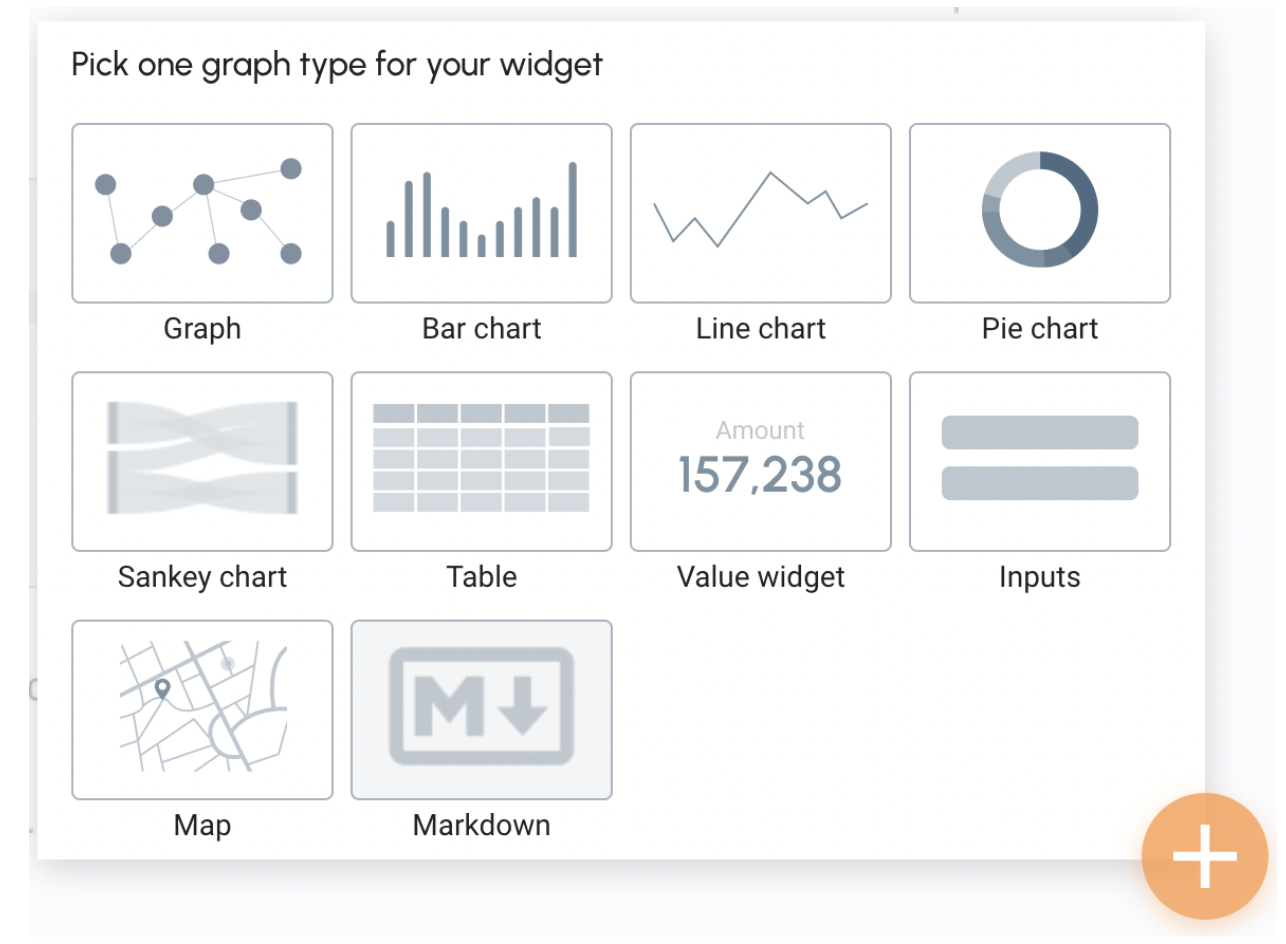
On the left side there is an edit area and on the right side you will see a display area.
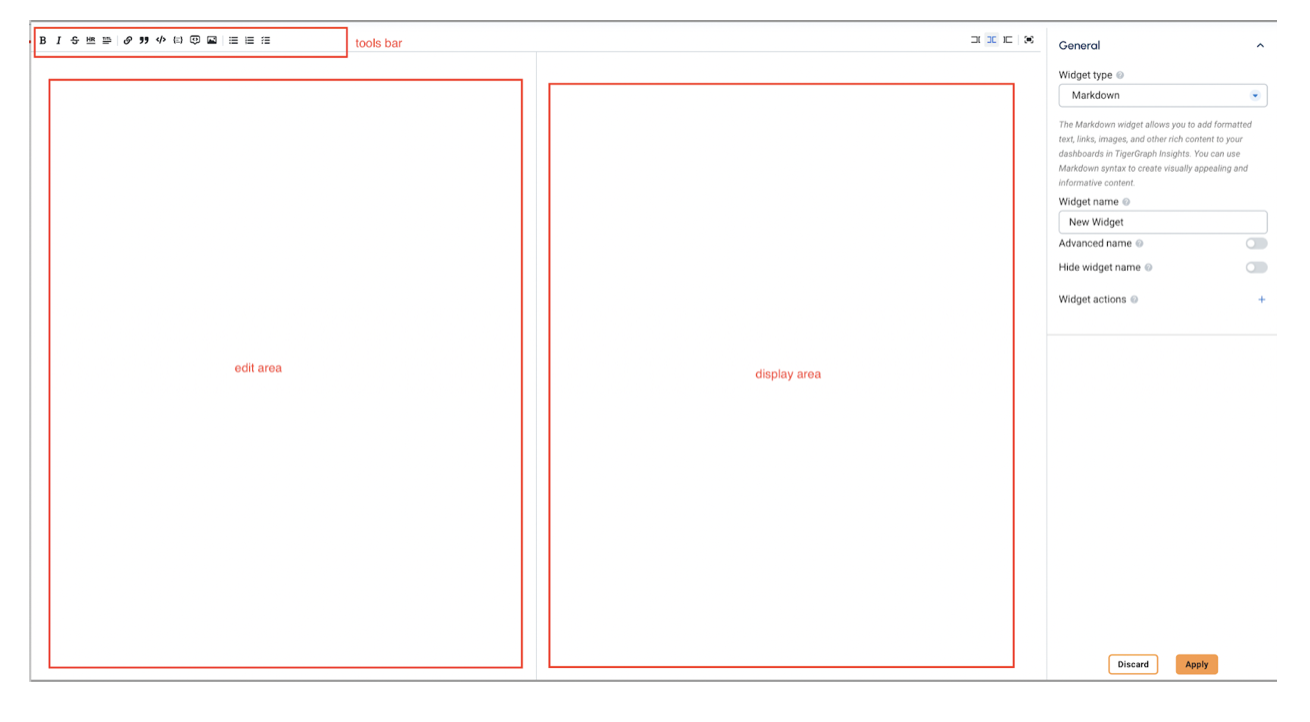
Markdown has very powerful text display capabilities, and can set text title, bold, and table.
# Title
## Title
### Title
nomal text
**bold text**
| table header | table header|
| ------ | ------ |
| table cell| table cell| |
| table cell| table cell |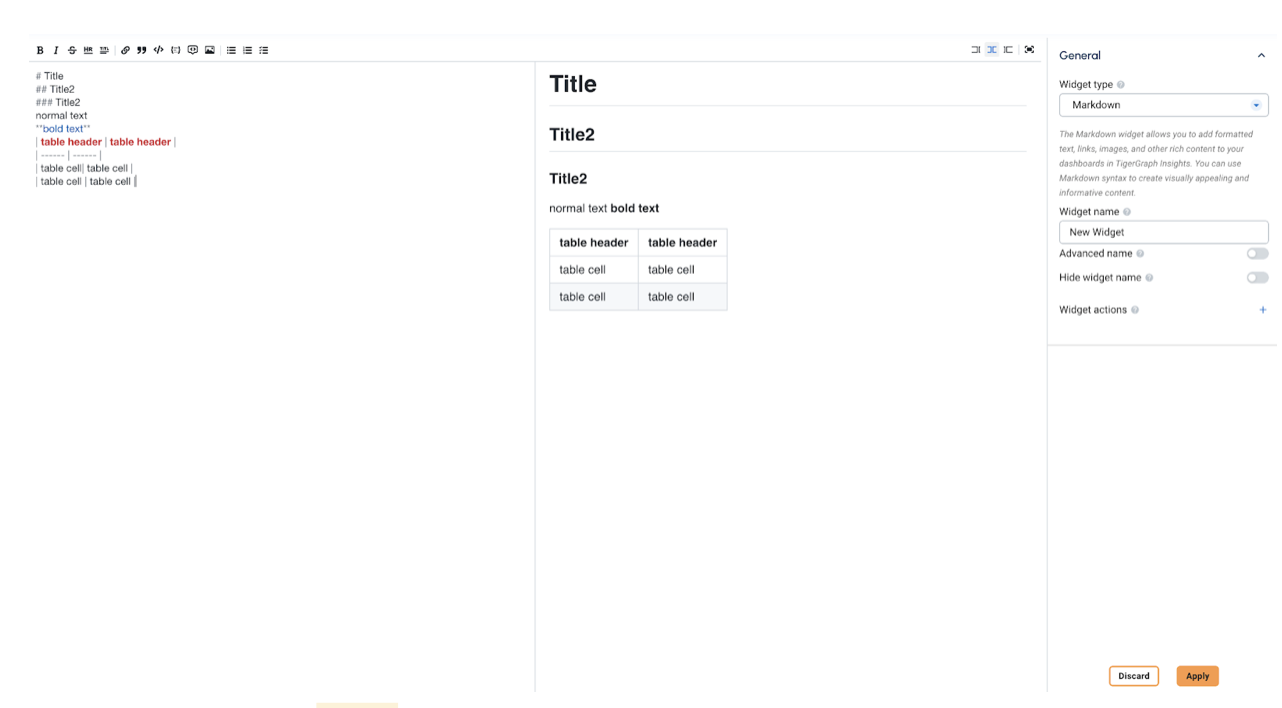
Users can also use Markdown to add images.
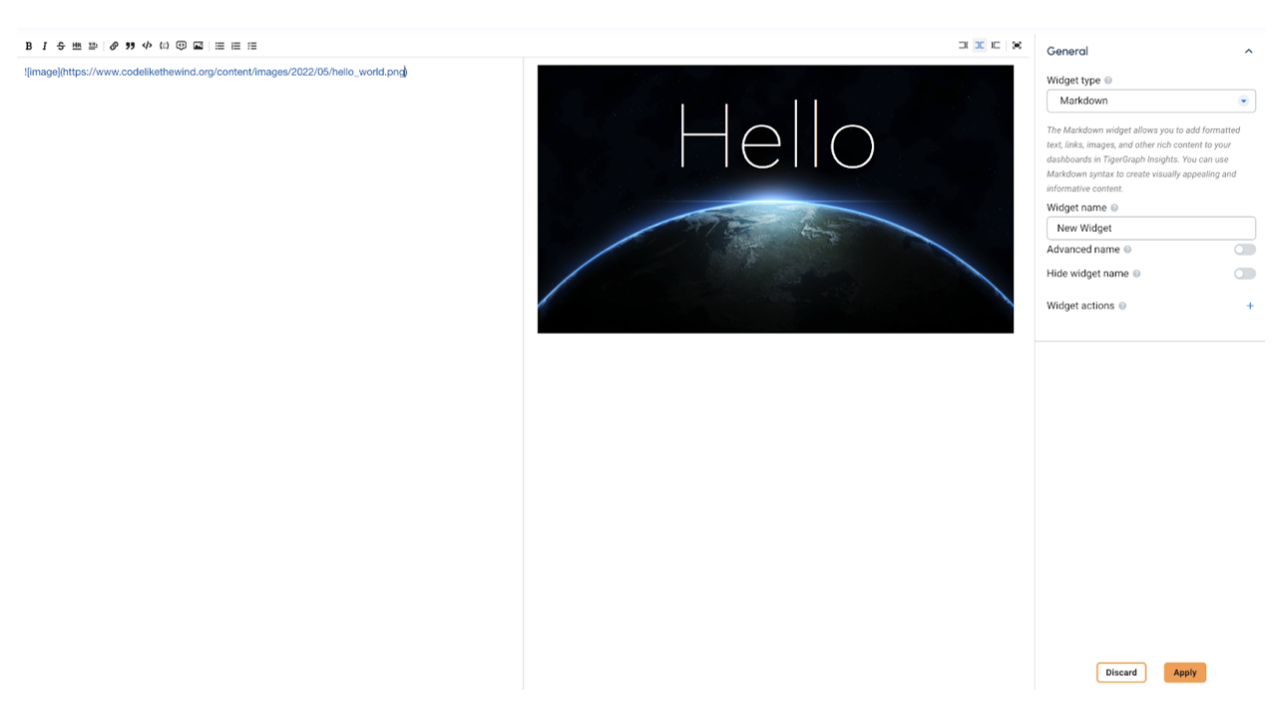
Users can also use Markdown to add HTML.
<h1>test2</h1>
<h2>test2</h2>
<iframe width="1085" height="678" src="https://www.youtube.com/embed/Mf8PuOElGpg" title="Detecting Fraud & Anti-Money Laundering (AML) Violations In Real-Time" frameborder="0" allow="accelerometer; autoplay; clipboard-write; encrypted-media; gyroscope; picture-in-picture; web-share" allowfullscreen></iframe>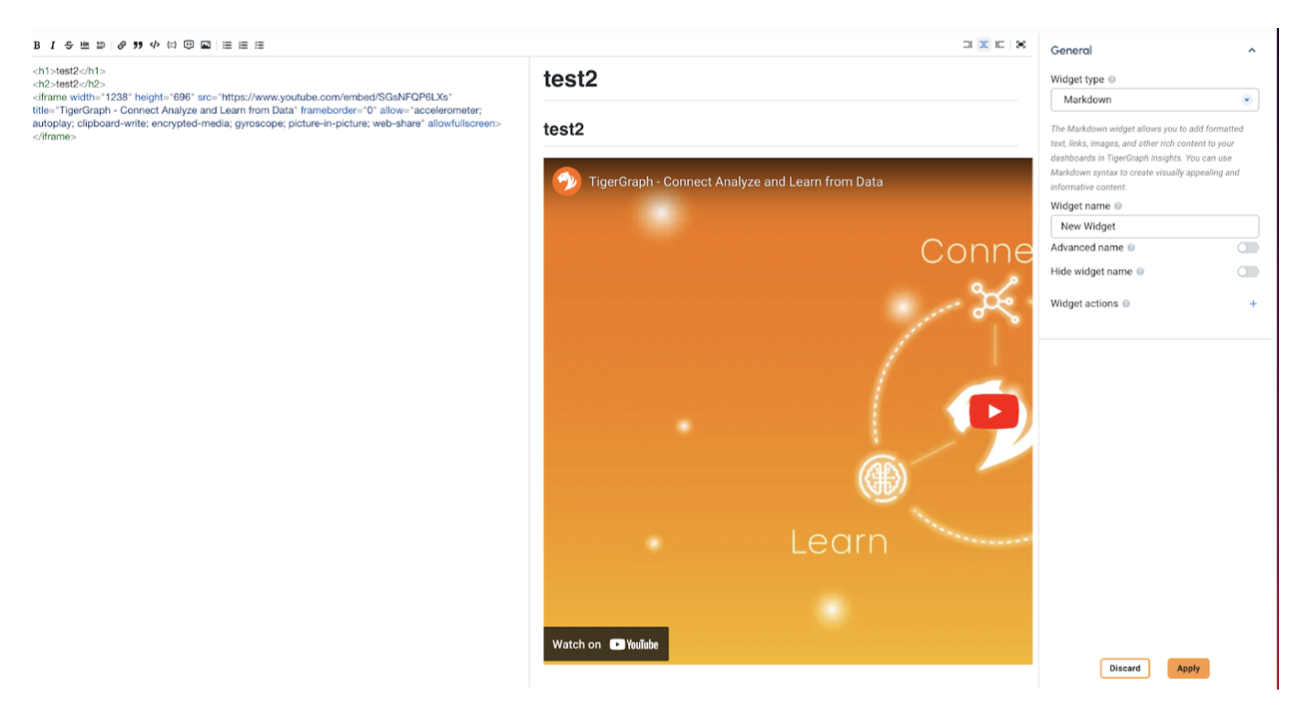
HTML Restrictions
The <iframe> tag is subject to security restrictions and cannot:
-
Have embedded websites that violate the
same-origin policy. -
Have X-Frame-Options set to
DENYorSAMEORIGIN. -
Have
Content-Security-Policyheaders that disallow embedding.
Same-origin policy restriction
The <iframe> tag follows the same-origin policy, which means it can only embed websites that have the same protocol, host, and port as the page containing the <iframe>.
If the embedded website doesn’t meet the same-origin requirements, the browser will block its loading.